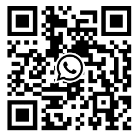
The Internet of Things is a key pillar of digital transformation plans. The challenges of adopting the Internet of Things in digital transformation also involve data usage, connectivity, and the risks involved. The Internet of Things is one of the most important digital transformation technologies. It constitutes one of the fundamental pillars for enterprises to move towards advanced technology applications. How did it do it? This is due to its ability to interconnect and integrate devices, which may be the network where all other tools work. However, although the Internet of Things is very practical, its implementation is not without difficulties. Here are some of the challenges and strategies to mitigate them:
There are risks and difficulties in the digital transformation of the Internet of Things. Enterprises need to seamlessly integrate IoT tools into their enterprise infrastructure to achieve smooth digital transformation. However, there are some challenges to this adoption. The following are the most common:
Enterprises collect data from various endpoints to deploy Internet of Things (IoT) systems. These data must be integrated from various systems into a cohesive platform. Failure to seamlessly compile data can lead to various issues, and minor compatibility issues (synchronization/time lag) during data capture may lead to inaccurate readings. Sometimes, the system cannot handle runtime deviations. This may leak erroneous data into the system. The result will be a flawed data analysis. Therefore, the inability to extract accurate data increases the risk of making incorrect decisions. Solution: Enterprises must adopt data strategies that are consistent with their business goals and use cases. Choose platforms and tools that can manage data volume, type, and speed. For example, teams can use distributed databases to store and process their data, including edge computing or cloud services. Data analysis and artificial intelligence can help enterprises acquire knowledge and value from data.
One of the biggest challenges in adopting technologies such as the Internet of Things is the traditional infrastructure in any organization. Enterprises must first transform their traditional infrastructure to achieve optimal integration with digital technology, upgrade or change it. Solution: Before starting an IoT project, the team must conduct an evaluation. It can help determine whether the current infrastructure of the enterprise is suitable for this adoption. Many companies have developed interfaces or upgraded to hardware that supports the Internet of Things for old devices. The scalability and reliability of testing and designing systems and equipment are crucial. They also need continuous monitoring to identify any issues or failures. Fault tolerance indicators and redundancy strategies, such as backup or load balancing, will improve reliability.
The key areas of technical and business teams vary greatly depending on the industry. The business team will be more concerned about milestones and return on investment. The technical team hopes to focus on suppliers, systems, and technology. Many times, their goals do not have the same focus. In this situation, the adoption of any technology will fall into meaningless discussions. Solution: Adopting the Internet of Things at all levels requires time, so IT teams must prioritize this task. The value generated should focus on the digital transformation of the entire enterprise, which is why the support of the entire enterprise is needed. Enterprises can develop these strategies to better support transformation strategies:
lContinuous contact with all affected teams
lExplain to each team what this means for the enterprise
lImplement a collection and feedback system.
Enterprises need accurate reporting and related analysis on the performance of IoT solutions. This will ensure a deep understanding of the long-term return on investment of the Internet of Things, for which the system must process a large amount of data. This is crucial as high-performance analysis platforms require it to function properly. In the absence of clear indicators, there will be uncertainty in the return on investment. This may become a reason to cancel the entire implementation. Solution: Intelligent IoT solutions can extract precise data from specific points to obtain usable insights. These help improve decision-making and increase investment returns. However, the return on investment adopted by the Internet of Things can be both direct and indirect. Obtain direct investment return through resource optimization. It reduces costs while providing higher quality services, reducing access times due to preventive measures and remote support. The indirect return on investment includes improving customer satisfaction and long-term strategic planning. Therefore, decision-makers need input from these two indicators. The analysis function of IoT platforms can significantly affect the future revenue of enterprises.
5. Data security risks
With the frequent occurrence of malicious software attacks, enterprises always pay attention to data security. When high-value data moves through the system, the theft of data and intellectual property is a risk. The large amount of data used and generated by IoT tools always faces risks. Solution: Throughout the entire lifecycle of IoT implementation, enterprises must adhere to industry security best practices. They must comply with the privacy and security standards of the Internet of Things.
· Choose encryption, authentication, authorization, and access control to protect data and devices.
· To protect users' rights and preferences, please use privacy design principles and privacy enhancement technologies.
· To prevent IoT security errors, IoT service providers must ensure reliable end-to-end data encryption. It includes modern encryption (SSL, TSL) and connection protocols (MQTT, CoAP, AMQP, XMPP).
Strengthen hardware security and IoT network security through monitoring tools.
Compliance with data privacy laws is not always an obvious issue. However, it may become a major obstacle to the deployment of the Internet of Things. For example, companies operating in the European Union must strictly comply with the General Data Protection Regulations (GDPR). For violations, fines alone account for a significant portion of the company's annual sales revenue. Solution: The compliance and regulatory framework for IoT deployment must be clearly defined in the initial governance document. In many cases, implementing partners will be responsible for these aspects. The transformation leader must ensure that the implementing partners provide the necessary documents and that all compliance is in place.
The complexity of the Internet of Things can be enormous. As more devices are added, managing and expanding IoT network infrastructure may become difficult. Due to the large amount of equipment and its generated data, effective data management and analysis may be difficult, and it can quickly replace the current system. The Internet of Things is one of the fundamental technologies required for enterprise digital transformation. If digitization is the goal of an enterprise, then there is no choice but to adopt it. Non digital enterprises will find it difficult to survive, let alone thrive.
Contact: Qui
Phone: 18146178586
Tel: 18146178586
Email: qui@zonewu.com
Add: 1501-3, Building F03, Phase III, Software Park, Jimei District, Xiamen City, Fujian Province, China
